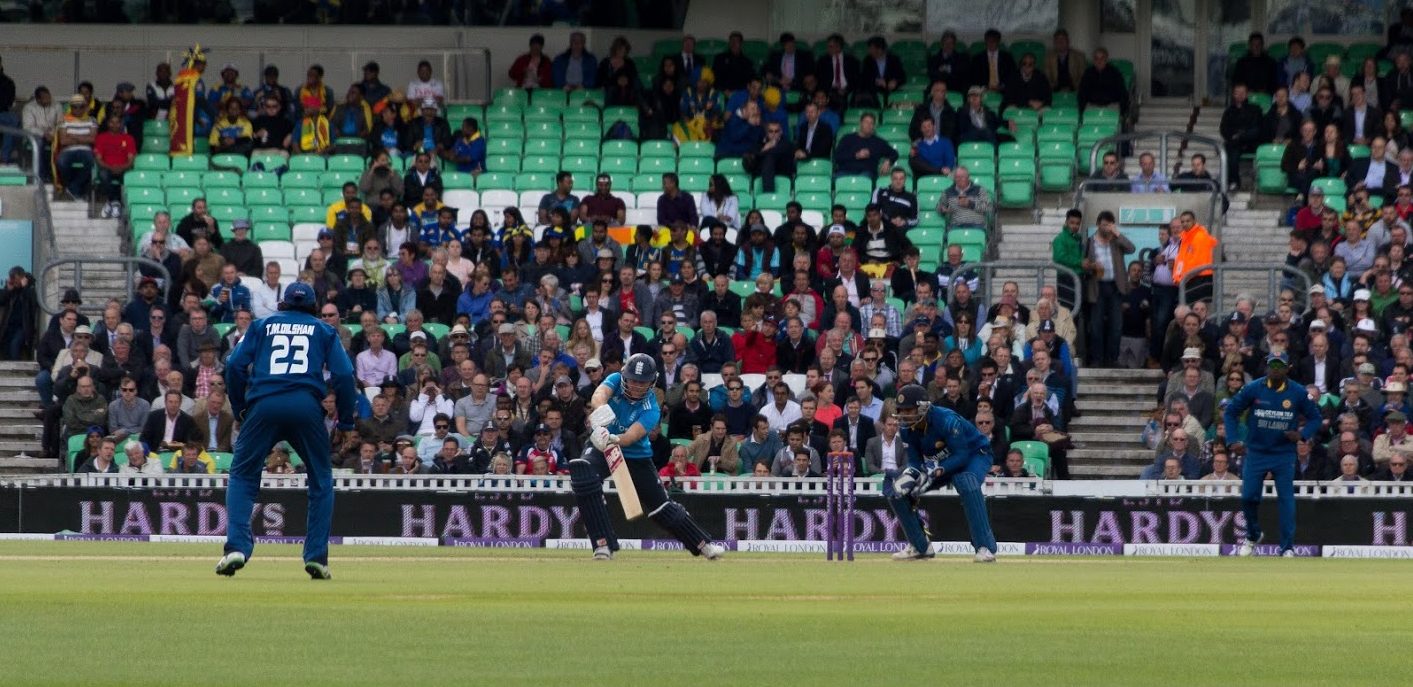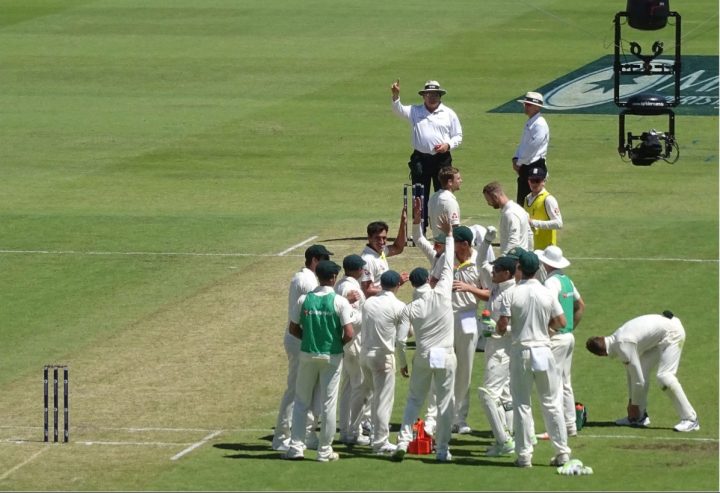With Ben Stokes announcing his retirement from ODIs yesterday, and the ECB sacrificing our domestic 50 over competition to accommodate The Hundred, I thought now would be a good time to publish this guest post from Haren Shylak. With T20 bringing in so much money, and Test cricket still the purists’ favourite, will ODIs be the format that slowly dies?
Since the first ODI was played in 1971, the format has always evolved. The format has seen revolutionary changes such as coloured clothing, numbered kits, D/N games, and field restrictions. The 50-over format attracted larger crowds and cricket gained popularity in itself. It seemed more engaging and less tiring for the fans. It also drove Test cricket towards becoming a more result-oriented game. Commercially viable ODIs led to championships like the World Cup, knockout tournaments, and the Champions Trophy. The ODI World cup is still the pinnacle of the sport. ODIs bring a balance between old ideas and modern-day strategies.
All said and done, however, the one-day format is now struggling to find context in the modern-day game. With the rise of the shortest format and the projected impact of the World Test Championship, many nations shunt aside the one-day format in their busy calendars. South Africa, for example, have just pulled out of an ODI series against Australia even though they need the points on offer to qualify automatically for the World Cup. Indeed, ODIs now only seem to be relevant in the ICC tournaments themselves.
Some plausible reasons for this downfall are,
- Games can take anywhere between 8–10 hours to finish. This is too long for the fast-paced world.
- Rules that highly favour the batsmen instead of striking a balance in the battle between bat and ball.
- Boring middle overs. People are not interested in watching batsmen rotate strikes whilst the ball does nothing.
- Growth of other formats with better commercial scope.
The rise of other formats
T20s became the focus of attraction amongst the general populace. Franchise cricket started booming soon after the inaugural T20 World Cup. The success of the Indian Premier League changed cricket’s global environment, particularly the relationship between players and national boards. The IPL, one of the sport’s most prestigious competitions, has become a festival of cricket in India. It opened new doors for cricketers to earn vast sums of money. With innovations like player auctions and new rules, the revolution started in cricket. The IPL auction in itself has millions of viewers analysing strategies even before cricket begins. The viewership skyrocketed.
Players now have ample opportunities with many nations starting their leagues, such as the Big Bash, CPL, PSL, and more, creating a global T20 circuit. The ICC has started adjusting its calendars concerning different leagues. There is no limit to innovation in the shortest format. BBL started imposing new and entertaining rules. Newer formats have started to arise in cricket, like the T10 league and The Hundred. But it’s implausible for these formats to run past T20. Also, the talks about the Women’s IPL next year and WBBL that already exist do benefit the sport. T20 cricket has provided cricket with a much-needed injection of excitement and interest, whilst benefiting governing bodies with monetary boosts that have helped develop the sport.
Test Cricket — The best cricket
On the flip side, Test cricket is still widely considered the best format of the game. Test matches have an appropriate name because, in essence, it tests mental strength, technical skills, and discipline like no other format. Both the mental prowess and physical fitness required to play the five-day game are demanding. Many players have found it difficult to transition between formats. Since the skill and temperament required for T20s and Tests have day and night differences, players started becoming specialists in one. It is every player’s dream to represent their country in the Test format. Though the rise of T20 and franchise competitions has seen some players opt for lucrative contracts over the honour of playing the longest form for their country.
It is hoped that the World Test Championship will rejuvenate Test cricket. Pink ball Tests are another innovation. Every other Test match had its impact on the WTC. There might be some flaws, but the tournament is still evolving, and it is the best start required. Superstar players have always promoted test cricket. Virat Kohli, the poster boy of Indian cricket, proclaimed: “For me, this is the absolute pinnacle of the game. I will give everything to Test cricket for the time I play, I can assure you of that”. The Ashes between traditional rivals Australia and England is something else. It’s still the most famous and historic series in cricket that magnetises the cricket world.
What next?
In the battle of formats, T20 and Test cricket have their USP, which leaves ODI with a big question mark. From the player’s perspective, it might be too much of an ask to be at their best in all leagues, formats, and geographies. With the ICC’s plan of a major tournament every single year, it should also find a balance between formats and leagues worldwide for the benefit of cricket as a whole. But for now, the uneasy coexistence between the formats is inevitable.
Haren Shylak









I still say that of all the tinkering that’s been tried with one day formats the best was the original John Player and International Cavaliers 40 overs. You lose that mid innings consolidation period where nothing much seems to happen, but there’s still enough time for batsmen to play themselves in and build an innings. And with run up restrictions you speeded up the over rate. If Willis could manage this anyone could. Matches were completed in 5-6 hours. The BBC even showed a game live every Sunday.
Sunday afternoon at the cricket was an institution inthe 70’s, often incorporated into a county game, then over 3 days, so you had Friday and Saturday county cricket, Sunday the 40 over game and you completed the county game on the Monday. Obviously you had midweek county games as well, which meant the Sunday game had to be played separately, which often involved a bit of travelling in the middle of a county game, but it worked pretty well for the spectator, if not for the players.
One of the things that made me laugh when they introduced the Hundred was the outcry about rule changes—largely because I was imagining the reaction if someone suggested a format now where you had to bowl off 12 metres to fit the game in in time for the TV channels. There’d be apoplexy.
Or one where there wasn’t a fixed number of overs per side, but it rather depended on how long the side fielding first took to bowl their overs (still the best penalty, at least in white-ball cricket, for slow over rates in my opinion…)
It’s an interesting hypothesis and one that seems more likely if the recent trend for Test Match chases to become more like ODI chases continues. However, the ODI still has a USP, namely it’s the only format where the spectator can enjoy a whole day out and (weather permitting) be guaranteed a result. This also helps to generate significant revenue for the grounds through inter-match sales. At a T20, you simply don’t get much time to spend. Furthermore, if it rains at an ODI, you often still get a decent game (e.g. 30 overs a side) whereas at a T20 it’s often a write-off or a farce. I once went to a T20 that was reduced to 6 overs a side and it felt like a rip-off; I only saw about an hour of cricket.
In my view, the 50-over format will survive because of reasons like these, and also because it allows for a terrific World Cup format. No-one asked these questions during the last World Cup – they ask them during meaningless ODI matches being played in high summer when the days are long – the very time we should be playing Test cricket.
I like 50 over cricket for the reasons you give, but recognise the dilemma. The Royal London Cup and the ODIs are light years apart.
Having said that, I was at the Oval ODI against India, and it was a day wasted. Eye wateringly expensive tickets, England all out for zilch in less than two hours, an easy cruise by the India openers, and home for tea.
Just bad luck. Happens very, very rarely with two sides who would usually be closely matched.
My dad took me to the 1982 Natwest final on a damp September morning. Warks collapsed to about 70-8 then crawled to about 150 in nearly 60 overs. I think Surrey then took about 40 overs to win by 9 wickets. It was very dull. It’s always happened, it’s the nature of the beast.
“Some plausible reasons for this downfall are”…
Administrators who only believe in T20 (and shorter) forms of the game and want to kill everything else off. That’s it, really. Everything else is waffle.
“There is no limit to innovation in the shortest format. BBL started imposing new and entertaining rules”.
Alternatively, they have to keep coming up with new gimmicks because all but the most brain-dead soon realise T20 is a very shallow and repetive experience that they soon tire of.
Stokes’ “retirement” from ODIs says where England stand in all this. Some of us said at the time that the ECB were burning down the house to win a WC in a format that would soon be defunct. It wasn’t very difficult to see. Next step is killing off the Royal London Cup – expect horror stories about how useless it is in-between long periods of the media just ignoring it. It’s a “development” competition you know. BTW I’m not against Stokes being rotated out of some of England’s series given England’s schedule but a blunt retirement from a whole format wasn’t the way to do it.
Test cricket will absolutely not survive, except maybe among the big three, unless someone (and realistically, that means the BCCI) starts funding it properly. There’s a reason why no non-big-three team is scheduled to play more than nine tests a year under the new FTP, and most of them will play eight or fewer. It’s called money.
For cash-strapped countries, it’s more financially worthwhile to play a series of white-ball games than tests (see the SA-Australia series from Sept 2023) and more worthwhile to dip your toe into the world of franchise cricket with your franchises owned by the IPL owners than play a bilateral series of white-ball games (SA-Aus, January 2023).
And people aren’t paying to watch red-ball cricket in anywhere near enough numbers in most countries, and to watch red-ball domestic cricket in any country. It needs a way of finding a very large number of new fans, or it needs subsidising.
James:
Any way to block blatant advertising by betting concerns cluttering up the comments page?8
In life more is generally not better and devalues the product. Endless T20 and its variants is like eating McDonald’s and drinking coke every day, it devalues the product but feeds the instant gratification society with brainless entertainment while they walk about staring blankly into their mobile phones. I’d remove T20 from the game of proper Cricket and market it as something completely different in my ECB free imaginary World.
In the meantime more top players will follow Stokes in this absurdly congested schedule that is killing the game. Maybe someone will take note, but I doubt it.
On another note I’ve just watched two classic CC games Surrey vs Yorkshire, won in the last over at Scarborough last week and currently Surrey vs Essex in which Surrey need 77 to win this morning at the Oval. This has featured an innings by Will Jacks of 150 not out including the last 50 in 16 balls. 4 day cricket at its very best. £120 for yet another pointless ODI anybody? Or place a bet on the next crap predictable T20 series perhaps?
And who would you get to fund this pure version of the sport worldwide–especially domestic red-ball cricket and tests not involving India or England? Or would it be an amateur sport?–in which case where would you find the players once any with any quality had left to join various T20 franchises?
Re Stokes: it’s interesting that everyone’s started to go on about the congested schedule, because both England’s international itinerary and the domestic season have fewer days than they did by 2003. Which–to state the obvious–suggests to me that the problem is not the schedule per se–unless it was equally a problem in the first decade of the century when we saw vanishingly few format-specific retirements.
Annoying isn’t it. Luckily we don’t get it too often. This one slipped by me though. Addressed now.
One day internationals generate a lot of money for the emerging cricket nations who find it hard to attract the major Test playing powers.
I agree that the format has been devalued but ODIs still have a place in the game.
Do they? That’s what I’d always thought too, but it’s not what Cricket South Africa are saying at the moment..
If the intermediate form of the game is allowed to die, does anyone really imagine there’s much future for the longer form? Outside maybe as the occasional niche entertainment roughly equivalent to polo or yachting?
The longer form will be more exposed and vulnerable as a result.